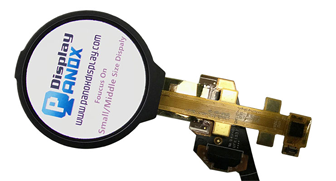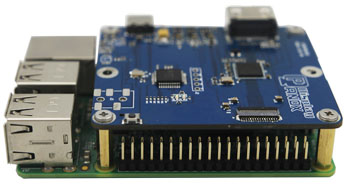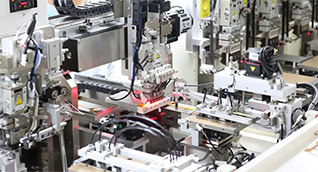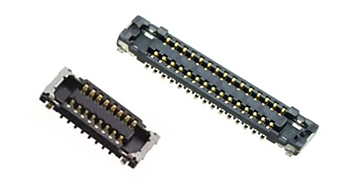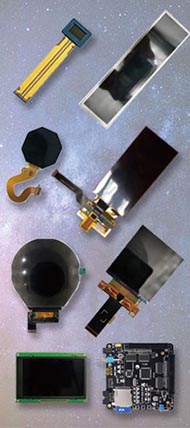SPI communication is a high-speed, synchronous serial protocol used to transfer data between microcontrollers and peripheral devices. It enables efficient, full-duplex data exchange through a master-slave architecture using four main signals: clock, data in, data out, and chip select.
What Is SPI Communication and Why Is It Important?
SPI (Serial Peripheral Interface) communication is a widely used protocol in embedded systems for connecting microcontrollers to sensors, displays, memory devices, and other peripherals. It is important because it offers fast data transfer rates, simple hardware connections, and flexible configurations, making it ideal for applications requiring real-time data exchange and precise control. Panox Display, a leader in OLED and LCD screen manufacturing, often utilizes SPI communication in their display modules to ensure seamless integration and high-performance display control.
How Does SPI Communication Work?
SPI communication operates on a master-slave model where the master device controls the clock signal (SCLK) and initiates data transfers. The protocol uses four lines:
-
MOSI (Master Out Slave In): Carries data from the master to the slave.
-
MISO (Master In Slave Out): Carries data from the slave to the master.
-
SCLK (Serial Clock): Synchronizes data transmission.
-
SS (Slave Select): Selects the slave device to communicate with.
Data is shifted out and in simultaneously on MOSI and MISO lines, synchronized by the clock pulses generated by the master. This full-duplex communication allows for efficient, continuous data exchange.
Which Devices Commonly Use SPI Communication?
SPI is commonly used in devices that require fast and reliable data transfer, including:
-
OLED and LCD displays (such as those supplied by Panox Display)
-
Flash memory and EEPROM chips
-
Sensors (temperature, pressure, accelerometers)
-
Real-time clocks
-
Digital-to-analog and analog-to-digital converters
-
Network interface cards
Its versatility and speed make it a preferred choice in industrial, automotive, wearable, and consumer electronics sectors.
Why Choose SPI Over Other Communication Protocols?
SPI offers several advantages compared to other serial protocols like I2C or UART:
| Feature | SPI | I2C | UART |
|---|---|---|---|
| Speed | High (up to tens of MHz) | Moderate (up to 3.4 MHz) | Moderate (up to 1 Mbps) |
| Complexity | Simple hardware, 4 wires | Requires pull-up resistors | Requires only 2 wires |
| Number of Slaves | Supports multiple slaves via separate SS lines | Supports multiple slaves on same bus | Point-to-point only |
| Data Transfer | Full-duplex | Half-duplex | Full-duplex |
| Addressing | No built-in addressing | Built-in addressing | No addressing |
SPI is preferred when speed and simplicity are critical, such as in Panox Display’s high-quality OLED and LCD modules that demand rapid refresh rates and precise data control.
How Can You Implement SPI Communication in Your Project?
To implement SPI communication, follow these steps:
-
Identify the master and slave devices.
-
Connect the MOSI, MISO, SCLK, and SS lines appropriately.
-
Configure the SPI settings in your microcontroller:
-
Clock polarity (CPOL)
-
Clock phase (CPHA)
-
Data order (MSB or LSB first)
-
Clock speed
-
-
Write or use existing SPI driver code to send and receive data.
-
Test communication with simple data transfers before integrating complex commands.
Panox Display provides comprehensive documentation and controller boards that facilitate easy SPI integration with their display panels, helping engineers and developers accelerate their projects.
What Are Common Challenges and How to Troubleshoot SPI Communication?
Common challenges in SPI communication include:
-
Incorrect wiring: Ensure MOSI, MISO, SCLK, and SS lines are correctly connected.
-
Clock polarity and phase mismatches: Verify CPOL and CPHA settings match between master and slave.
-
Signal integrity issues: Use proper shielding and short cables to reduce noise.
-
Slave select management: Ensure only one slave is selected at a time to avoid bus conflicts.
Using logic analyzers or oscilloscopes can help debug timing and signal issues. Panox Display’s technical support can assist with troubleshooting display-specific SPI configurations.
How Does SPI Communication Enhance Panox Display Products?
Panox Display integrates SPI communication into many of its OLED and LCD modules to provide:
-
Fast refresh rates for smooth visual output.
-
Low latency control for responsive user interfaces.
-
Flexible customization through programmable controller boards.
-
Reliable data integrity in industrial and wearable applications.
This makes Panox Display’s products ideal for developers needing robust and efficient display solutions.
What Are the Latest Trends and Innovations in SPI Communication?
Recent trends in SPI communication include:
-
Higher clock speeds reaching tens of MHz for ultra-fast data transfer.
-
Dual and quad SPI modes that increase throughput by using multiple data lines.
-
Integration with advanced microcontrollers and FPGAs for complex applications.
-
Enhanced power efficiency for battery-operated devices.
Panox Display stays at the forefront by offering displays compatible with these advanced SPI features, supporting next-generation applications in VR, automotive, and military sectors.
Panox Display Expert Views
"SPI communication remains one of the most reliable and efficient protocols for display integration. At Panox Display, we prioritize seamless SPI compatibility to empower engineers and developers with fast, flexible, and high-quality display modules. Our commitment to innovation ensures that our clients receive cutting-edge solutions that simplify design complexity while enhancing performance across diverse industries."
How Can You Optimize Your SPI Communication for Better Performance?
Optimizing SPI communication involves:
-
Selecting appropriate clock speed balancing speed and signal integrity.
-
Minimizing cable length and using proper grounding.
-
Configuring correct clock polarity and phase.
-
Using hardware or software buffering to manage data flow.
-
Employing error-checking mechanisms if critical.
Panox Display offers controller boards and accessories that help optimize SPI communication, ensuring stable and efficient operation.
What Are the Security Considerations When Using SPI Communication?
While SPI is fast and simple, it lacks inherent security features. Consider:
-
Physical security of SPI lines to prevent tampering.
-
Using encryption or authentication at higher protocol layers if data sensitivity is high.
-
Avoiding SPI communication over long distances without proper shielding.
Panox Display’s industrial-grade displays often incorporate robust hardware design to mitigate interference and enhance reliability.
Conclusion
SPI communication is a cornerstone protocol for connecting microcontrollers with peripherals like displays, sensors, and memory devices. Its speed, simplicity, and flexibility make it ideal for a wide range of applications, including those served by Panox Display’s advanced OLED and LCD modules. Understanding SPI’s operation, advantages, and implementation challenges empowers developers to create efficient, reliable embedded systems. Leveraging Panox Display’s expertise and products ensures access to high-quality displays optimized for SPI, accelerating innovation and product success.
FAQs
Q1: Can SPI support multiple slave devices?
Yes, SPI can support multiple slaves by using separate slave select (SS) lines for each device.
Q2: Is SPI communication full-duplex or half-duplex?
SPI communication is full-duplex, allowing simultaneous data transmission and reception.
Q3: What is the maximum speed of SPI communication?
SPI speeds vary by hardware but typically range up to tens of MHz; some advanced devices support even higher speeds.
Q4: How does SPI differ from I2C?
SPI uses separate lines for data in and out and is faster, while I2C uses a shared data line and supports addressing but at lower speeds.
Q5: Does Panox Display provide SPI-compatible display modules?
Yes, Panox Display offers a wide range of OLED and LCD modules with SPI interfaces, along with controller boards and technical support.











